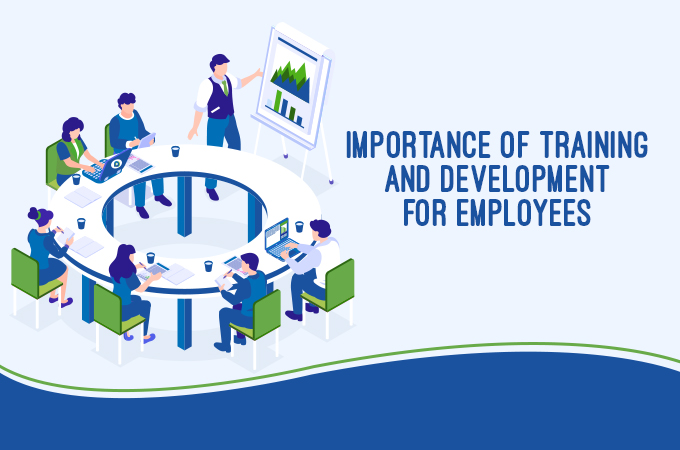In the modern world with increased competition, it is important more than ever to keep employees updated with the latest skills and arm them with the requisite knowledge to complete their tasks effectively. As technology advances and old methods of working becomes redundant, organizations need to keep themselves aligned with these changes in terms of knowledge, skills, values and abilities. Proper workforce training is an indispensable part of organizations to remain competitive. Devising comprehensive and high-quality development programs enables strengthening the skill set of the workforce and close the knowledge gap.
Companies that focus on employee training have highly engaged employees and see 24% higher profits than others.
Organizations employ a lengthy process to recruit and onboard employees successfully, but rarely is much thought spared in training them afterwards to improve their knowledge base. Employee training and development programs enable employees to gain knowledge and improve performance and productivity levels. The development plan’s prime objective is to identify key areas that need improvement and ascertain the actions required to acquire and embed that learning. The development plan is ideally aligned with the organizational goals and objectives. The Covid-19 pandemic has disrupted the way we work and accelerate the adoption of remote working. The ability to successfully merge new emerging technology with reskilling, aimed towards future development is a challenge that many organizations are grappling with currently.
The benefits of employee training programs include:
Proper orientation and training present a good opportunity for employees to reskill/ upskill themselves and increase their knowledge of new and emerging technologies. It offers an excellent medium to exchange ideas, discuss important points and interact with other colleagues. Despite the cost of training and upskilling of employees, the return on investment is immense and it offers umpteen benefits.
- Training programs are aimed at improving employee performance and productivity levels in the organization. It enhances their confidence and helps them do better at work.
- It addresses the weakness and skill gaps in your workforce and shows that there is room for improvement.
- A trained workforce is better for your company’s growth and prospects.
- By investing in training programs, you show your employees that you care for their betterment and are invested in their future and upskilling. It increases employee satisfaction and demonstrates appreciation.
- By training your staff, you reduce the time and costs spent on employee turnover.
- It tests the efficiency and effectiveness of existing systems and shows areas of improvement.
- A strong training program enhances the reputation of a brand and is likely to attract new talent.
Now that we know the benefits of implementing a great training program, let’s discuss how to design an effective training program for your employees.
- Determine training needs
It is important to assess the needs before developing a successful training program for employees. The HR department needs to find areas to focus on for building a successful development plan.
- Target on improving soft skills
The modern and new workforce requires employees that are adaptable and receptible to changes sweeping in the business world. Build leadership and interpersonal skills in employees to fill skill gaps.
- Create an actionable plan
Create a comprehensive training program that includes learning theories, instructional design, content, materials and other training elements. Be receptive to feedback and make adjustments along the way.
- Personalize the training process
Make the training program personalized and tailor-made to employee needs for higher impact. A one-size-fits-all mentality is detrimental to a growing and diverse workforce.
- Measure results
The success of any campaign is determined by the results and impact it had on employees post-completion. Data and analytics help organizers in assessing the effectiveness of the training program and gain meaningful insights.
An effective training process helps organizers be aligned with the true business goals of the organization. It helps the workforce stay updated with the current technologies, improves employee retention and increases employee satisfaction levels. It has a domino effect on the organization, where leaders feel competent and the employees have the confidence and commitment to work.
